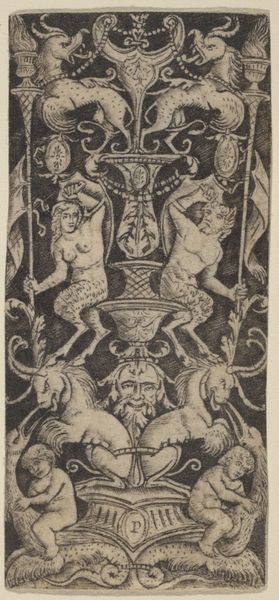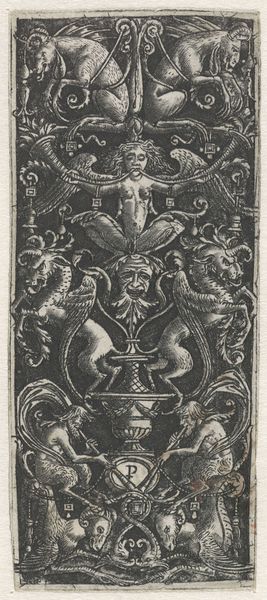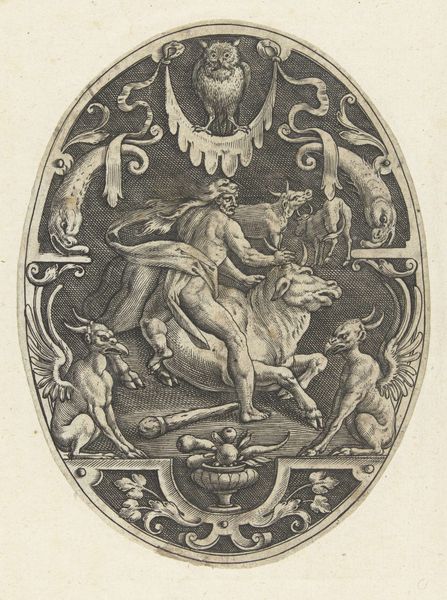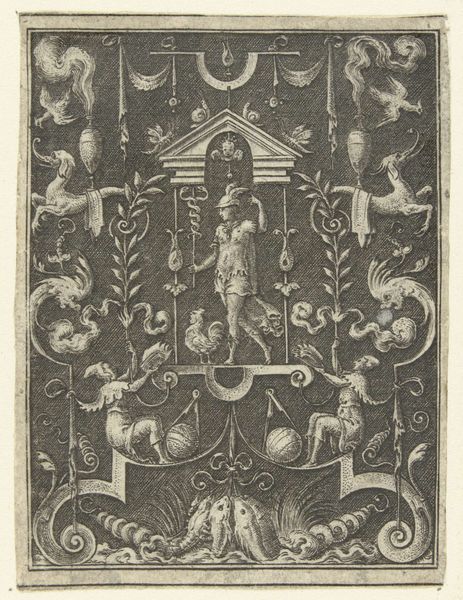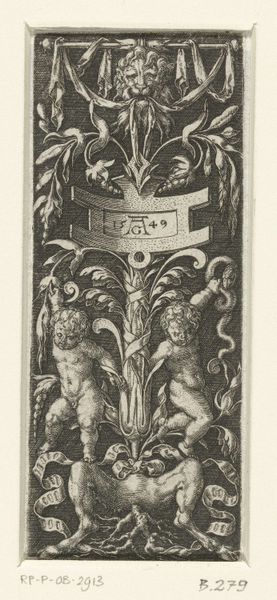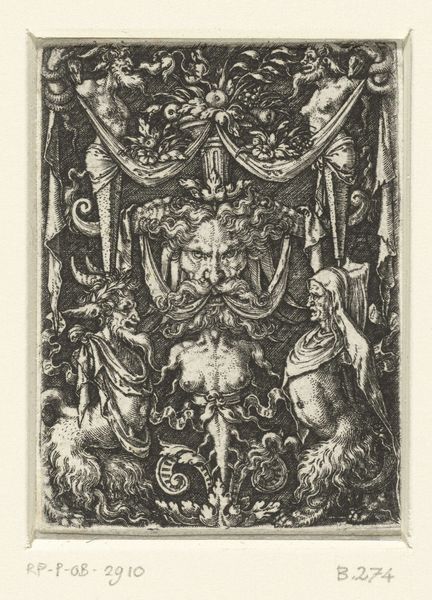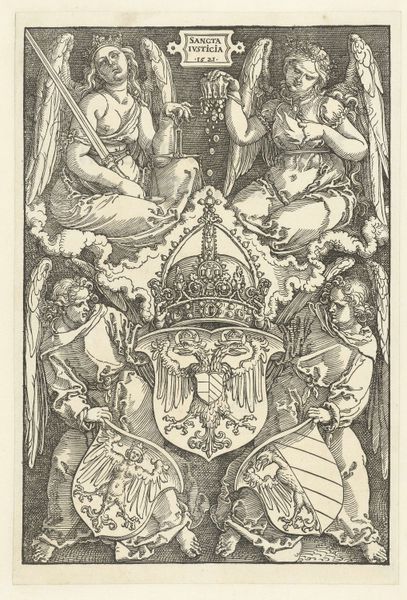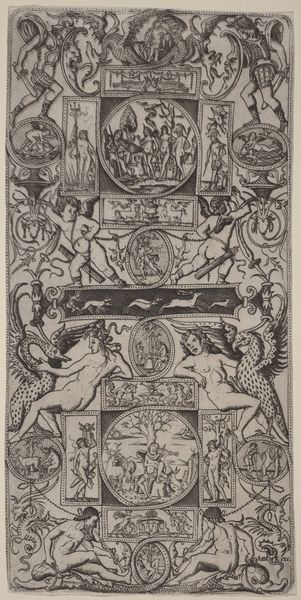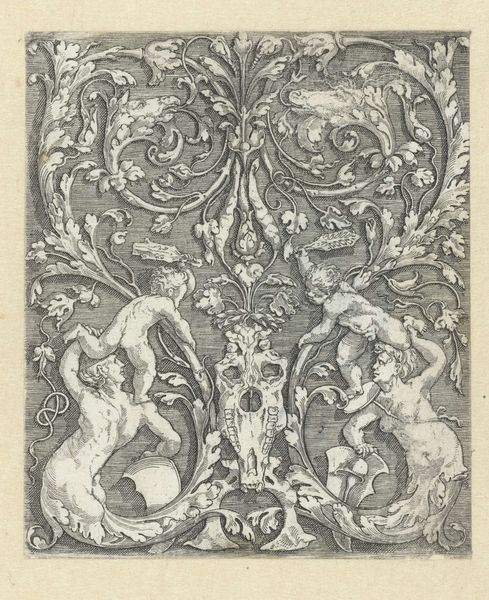
Ornament met kandelaber waarop mannelijke en vrouwelijke satyr zitten boven voet met twee leeuwachtige wezens met horens en twee putti op fabeldieren met vogelkoppen 1505 - 1520
0:00
0:00
peregrinodacesena
Rijksmuseum
ornament, print, engraving
#
ornament
#
pen drawing
# print
#
pen sketch
#
pencil sketch
#
old engraving style
#
figuration
#
11_renaissance
#
pen-ink sketch
#
line
#
pen work
#
sketchbook drawing
#
italian-renaissance
#
engraving
Dimensions: height 77 mm, width 35 mm
Copyright: Rijks Museum: Open Domain
Curator: Standing before us is a rather fascinating print, "Ornament met kandelaber waarop mannelijke en vrouwelijke satyr zitten boven voet met twee leeuwachtige wezens met horens en twee putti op fabeldieren met vogelkoppen", created between 1505 and 1520, by Peregrino da Cesena. Editor: It feels dense, almost claustrophobic. The composition is so packed with figures that it is difficult to take in everything at once, although I notice it features symmetry. Curator: That density is very characteristic of Renaissance ornament. Every available space becomes a canvas for symbolic expression. You notice the satyrs? Satyrs in art often signal heightened emotional states – lust, freedom, primal instinct. These figures link to fertility and untamed natural forces. Editor: The way the forms intertwine and almost battle for dominance speaks to your point about that untamed feeling. It’s all in a fascinatingly shallow depth. Curator: Think of this image as a cultural microcosm, a symbol saturated summary. Notice the placement of figures in relation to each other; the lion-like creatures, and those playful putti. It invites viewers to consider the multifaceted dimensions of human existence. The putti can show innocence against experience and the bestial versus human. Editor: Absolutely, the organization also uses visual tension. All these creatures seem constrained within rigid frame of the work, even suffocated. You have these beautiful, curving figures but within these quite firmly engraved borders. Curator: Boundaries were very much on people’s minds in this period. We must remember the era saw rigid social and religious systems – yet those ‘tamed’ systems contained immense power in this era of the late Renaissance, both beautiful and terrifying. This object is fascinating due to its power to condense potent cultural themes and their resonance into one compact and beautifully rendered piece. Editor: The artwork offers a fascinating visual encoding. It forces us to think about balance. Curator: It's a mirror reflecting a complex past that, in many ways, speaks directly to us today.
Comments
No comments
Be the first to comment and join the conversation on the ultimate creative platform.
